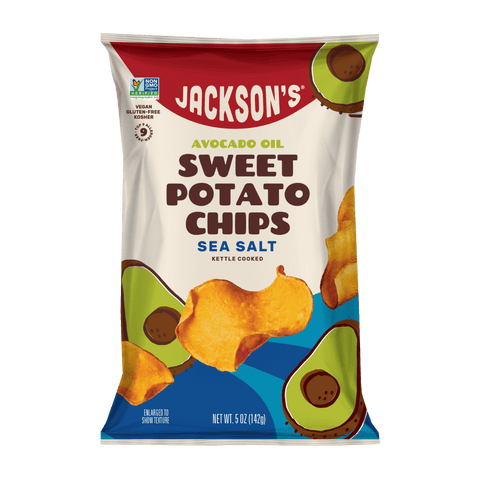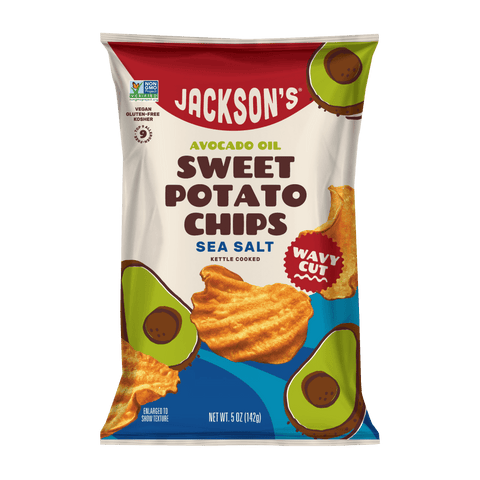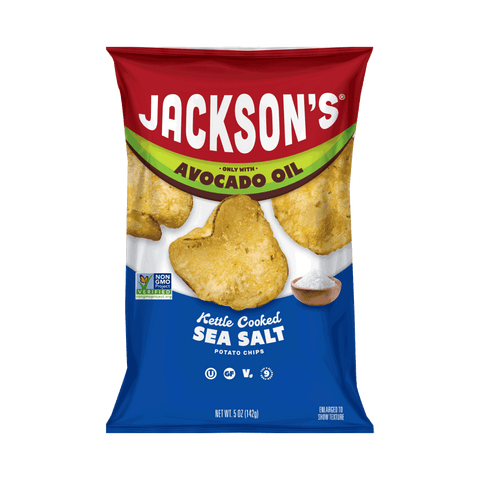Beef Tallow: The Return of a Natural Wonder

Beef Tallow is making a comeback—and for good reason.
The sizzle of a perfectly cooked steak. The golden-brown crust on roasted potatoes. The flaky layers of a perfect pie crust. Behind many of history's most delicious foods stands an unsung culinary hero: beef tallow.
Long before seed oils dominated supermarket shelves and restaurant kitchens, beef tallow was the cooking fat of choice across America and much of the world. Today, this traditional animal fat is experiencing a renaissance as chefs, health enthusiasts, and sustainability advocates rediscover it.
But what exactly is beef tallow, and why should you consider bringing this traditional fat back into your kitchen? Let's dive into the topic of beef tallow.
What Is Beef Tallow?
Beef tallow is, simply put, rendered beef fat. The process transforms the raw suet (the hard fat found around the kidneys and loins of cattle) into a shelf-stable cooking fat with a high smoke point and distinctive flavor profile.
Tallow is what our ancestors used for generations. It's not some manufactured product created in a lab. It's what naturally occurs in the animal, minimally processed through rendering.
The rendering process itself is straightforward: raw beef fat is slowly heated until it melts, separating the pure fat from any meat tissue or impurities. Once strained and cooled, the result is a smooth, firm, white to cream-colored fat with a mild, pleasant flavor.
At room temperature, tallow is solid—much like butter—but melts quickly when heated. Unlike many polyunsaturated oils that turn rancid quickly, properly stored tallow can last for months without refrigeration and up to a year when refrigerated.
The Historical Significance of Beef Tallow
Before the rise of seed oils in the 20th century, beef tallow was a cornerstone of American cooking. From the 1800s through much of the 1900s, it was the fat of choice for everything from frying to baking.
Many people don't know that the famous McDonald's french fries that built an empire were originally cooked in beef tallow. It wasn't until the late 1980s, when misconceptions about saturated fats took hold, that they switched to vegetable oils. Many say the fries have never tasted the same since. For those looking for tallow fries today, Steak ‘n Shake uses 100% beef tallow to cook their fries, onion rings and chicken tenders.
The Nutritional Profile of Beef Tallow
In stark contrast to the industrial seed oils that dominate today's food supply, beef tallow offers a nutrient profile that humans have evolved with over thousands of years:
-
Stability: With approximately 50% saturated fat, 42% monounsaturated fat, and only 4% polyunsaturated fat, tallow is remarkably stable under heat, meaning it doesn't oxidize or create harmful compounds when cooking.
-
Vitamin Content: Tallow contains fat-soluble vitamins including A, D, E, and K—nutrients often lacking in modern diets.
-
Conjugated Linoleic Acid (CLA): Grass-fed beef tallow is particularly rich in CLA, a fatty acid associated with potential anti-cancer and fat-burning properties.
-
Stearic Acid: This saturated fatty acid, abundant in tallow, has been shown in some research to have neutral or even positive effects on cholesterol levels, challenging older assumptions about saturated fats.
The stability of beef tallow under heat is something modern oils can't match. When polyunsaturated vegetable oils are heated to high temperatures, they undergo oxidation and create compounds that may contribute to inflammation and cellular damage. Tallow, on the other hand, maintains its integrity.

Tallow vs. Industrial Seed Oils
The contrast between traditional beef tallow and modern industrial seed oils couldn't be starker. Seed oils—including soybean, canola, corn, and cottonseed oils—have become ubiquitous in the modern food system despite their relatively recent introduction to human diets.
These industrial oils undergo extensive processing:
-
Extraction using high-heat mechanical pressing and/or chemical solvents like hexane
-
Degumming to remove phospholipids
-
Neutralization with caustic soda to remove free fatty acids
-
Bleaching to lighten the color
-
Deodorization using high heat that can create trans fats
Not a very natural process. Compare that to tallow—melt beef fat, strain it, and you're done. No chemical solvents, no industrial deodorizers, no bleaching agents.
The nutritional differences are equally significant. Industrial seed oils contain predominantly omega-6 polyunsaturated fats—often at levels 50 times higher than what our ancestors consumed. Many researchers believe this dramatic shift in fatty acid consumption may contribute to modern inflammatory conditions.
Culinary Benefits: Why Chefs Are Returning to Tallow
Beyond its nutritional profile, tallow offers exceptional culinary benefits that have chefs rethinking their oil choices:
Superior Heat Stability
With a smoke point of approximately 480°F (250°C), beef tallow can handle high-heat cooking without breaking down or producing acrid smoke and harmful compounds.
You can get a perfect sear on a steak using tallow, and it won't smoke out your kitchen like some oils would. And unlike some oils which lose their health benefits when overheated, tallow maintains its integrity.
Flavor Enhancement
Tallow imparts a subtle richness that enhances food without overpowering it. This quality makes it particularly valued for:
-
French fries: The legendary flavor of traditional tallow-fried potatoes has inspired many restaurants to return to this cooking method.
-
Pastries: Tallow creates exceptionally flaky pie crusts and biscuits.
-
Roasted vegetables: Root vegetables roasted in beef tallow develop a caramelized exterior preferable to other fats.
Versatility
Few cooking fats can match tallow's range of applications:
-
Deep frying
-
Sautéing
-
Roasting
-
Baking
-
Grilling
-
Seasoning cast iron cookware
This versatility makes it a practical choice for home cooks looking to simplify their pantry while upgrading their cooking.
Sustainability Considerations
As consumers grow increasingly concerned about the environmental impact of their food choices, tallow offers several advantages:
Reduced Waste: Tallow utilizes parts of the animal that might otherwise be discarded, honoring the “nose-to-tail” philosophy of responsible meat consumption.
Lower Environmental Impact: Many seed oils come from monoculture crops requiring intensive pesticide and fertilizer use. Industrial soybean and canola production, in particular, is linked to deforestation and habitat destruction.
Lower Carbon Footprint: When sourced as a byproduct of existing meat production, tallow doesn't require additional land, water, or resources to produce.
If you're already consuming beef, using the tallow is simply being respectful of the whole animal. Traditional cultures understood this. They would never discard such a valuable resource.
How to Source and Use Beef Tallow
For those interested in incorporating this traditional fat into their cooking, here are practical tips:
Finding Quality Tallow
-
Local Farms: Many grass-fed beef producers sell tallow directly to consumers at farmers' markets or through farm shares.
-
Butcher Shops: Traditional butchers often render their own tallow or can provide raw suet for home rendering.
-
Online Specialty Retailers: Several companies now specialize in traditionally rendered animal fats, including tallow from grass-fed cattle.
-
DIY Rendering: Purchase beef suet from a butcher and render it yourself (detailed below).
Quality Considerations
Not all tallow is created equal. The nutritional profile directly reflects what the cattle ate. Grass-fed beef tallow contains significantly higher levels of omega-3 fatty acids, CLA, and vitamins compared to grain-fed.
Look for tallow that is:
-
From grass-fed, pasture-raised cattle when possible
-
Minimally processed (no additives or preservatives)
-
Packaged in light-protective containers to prevent oxidation
DIY Tallow Rendering
Making your own tallow is surprisingly simple:
-
Source beef suet from a quality butcher
-
Cut it into small pieces or grind it
-
Place in a heavy-bottomed pot or slow cooker on low heat
-
Melt slowly (8-10 hours on low in a slow cooker or 2-3 hours on very low heat on the stovetop)
-
Strain through cheesecloth to remove any solids
-
Pour into heat-safe containers to cool and solidify
-
Store at room temperature (for 3-6 months) or refrigerate (for up to a year)
Culinary Applications
Those new to cooking with tallow can start with these applications:
-
The Ultimate Roast Potatoes: Parboil potato chunks, rough them up by shaking in the pot, then roast at 425°F in beef tallow until golden and crispy.
-
Better Burgers: Add a tablespoon of melted tallow to ground beef before forming patties for juicier results.
-
Traditional Yorkshire Pudding: Replace the oil in the recipe with melted tallow for authentic flavor.
-
Cast Iron Care: Use a small amount to season and maintain cast iron cookware.
The Cultural Shift: Why Tallow Is Trending Again
The resurgence of beef tallow reflects broader cultural shifts in how we think about food:
Ancestral Diet Movement: Many nutritional approaches, including Paleo, carnivore, and traditional foods diets, emphasize the importance of animal fats that our ancestors consumed.
Reaction Against Ultra-Processing: As consumers grow wary of highly processed foods, many are seeking minimally processed alternatives like tallow.
Culinary Heritage: Chefs and food enthusiasts are rediscovering traditional cooking methods and ingredients that fell out of favor in the late 20th century.
We're seeing a fundamental rejection of the nutritional dogma that demonized traditional animal fats. People are questioning why heart disease, diabetes, and obesity rates skyrocketed during the same period when more switched from tallow and butter to seed oils.

Beef Tallow Alternatives (seed oil-free)
While industrial seed oils should be avoided for their inflammatory properties and heavy processing, not all plant oils deserve the same scrutiny. High-quality avocado oil and extra virgin olive oil stand apart as legitimate alternatives. Both are minimally processed from whole fruits rather than seeds, containing beneficial compounds like oleic acid and antioxidants. Extra virgin olive oil shines in cold applications and gentle cooking, while properly-sourced avocado oil offers versatility with its higher smoke point.
Jackson’s snacks always use 100% pure premium avocado oil. Unlike harmful industrial seed oils, these fruit-derived oils have long histories of traditional use in Mediterranean and Central American cuisines. When paired with beef tallow in a well-stocked kitchen, these options provide flexibility while still avoiding the industrial seed oils that have infiltrated the modern food supply.
You may wonder “Why doesn’t Jackson’s make beef tallow chips?” We get asked this quite often! While we experimented with various cooking oils in our early days (including tallow in our home kitchen), we discovered something special with avocado oil. It creates the perfect crunch while beautifully enhancing the natural flavors of our heirloom potatoes. Avocado oil doesn't just deliver on texture—it acts as a flavor enhancer that lets our premium potatoes truly shine!
The Future of Fat: Where Tallow Fits In
As we continue to reevaluate our relationship with food, beef tallow stands as a reminder that sometimes traditional wisdom offers solutions to modern problems.
The pendulum is swinging back. After decades of processed foods dominating our kitchens, consumers are rediscovering the foods their great-grandparents would recognize—and beef tallow is a perfect example of this return to tradition.
For those concerned about both inflammation and culinary excellence, beef tallow offers a compelling alternative to industrial seed oils. It represents a connection to culinary heritage, sustainable food practices, and the simple pleasure of food cooked in a fat that humans have valued for thousands of years.
No Seedy Oils Here
Avocado Oil Goodness Meets Irresistible Flavor - No Seed Oils Here!
-

 8 Pack Best SellerSea Salt Sweet Potato Chips in Avocado Oil 5oz (Pack of 8)
8 Pack Best SellerSea Salt Sweet Potato Chips in Avocado Oil 5oz (Pack of 8)Sea Salt
Sweet Potato Chips in Avocado Oil
- Size
- 5oz bags
- Regular price
- $35.99
- Sale price
- $35.99
- Regular price
-
$35.99 (Liquid error (snippets/product-price line 131): divided by 0 per bag) - Unit price
- per
-

 8 PackWavy Sea Salt Sweet Potato Chips in Avocado Oil 5oz (Pack of 8)
8 PackWavy Sea Salt Sweet Potato Chips in Avocado Oil 5oz (Pack of 8)Wavy Sea Salt
Sweet Potato Chips in Avocado Oil
- Size
- 5oz bags
- Regular price
- $35.99
- Sale price
- $35.99
- Regular price
-
$35.99 (Liquid error (snippets/product-price line 131): divided by 0 per bag) - Unit price
- per
-

 8 Pack New Arrival!Sea Salt Kettle Chips in Avocado Oil 5oz (Pack of 8)
8 Pack New Arrival!Sea Salt Kettle Chips in Avocado Oil 5oz (Pack of 8)Sea Salt
Kettle Chips in Avocado Oil
- Size
- 5oz bags
- Regular price
- $35.99
- Sale price
- $35.99
- Regular price
-
$35.99 (Liquid error (snippets/product-price line 131): divided by 0 per bag) - Unit price
- per
-

 8 Pack New Arrival!Variety Pack Kettle Chips in Avocado Oil 5oz (Pack of 8)
8 Pack New Arrival!Variety Pack Kettle Chips in Avocado Oil 5oz (Pack of 8)Variety Pack
Kettle Chips in Avocado Oil
- Size
- 5oz bags
- Regular price
- $35.99
- Sale price
- $35.99
- Regular price
-
$35.99 (Liquid error (snippets/product-price line 131): divided by 0 per bag) - Unit price
- per






